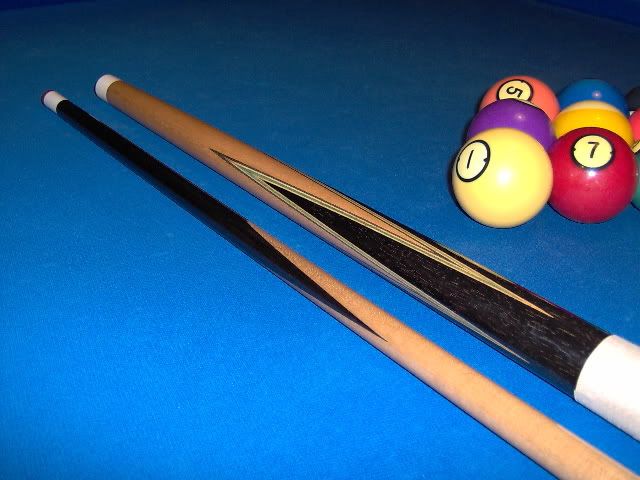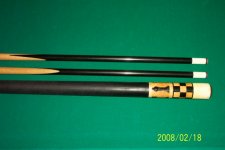I am sure most or all of you have seen the antique cues with the ebony spliced end on the shaft.
I have been told (and have seen in the antique catalogs) that this was often done when they were new.
I have also been told that it was sometimes done to repair a warp, but I don't know if it is true.
I am not talking about a splice or points at the joint end of the shaft but rather at the other end, as in the distal 1/3 of the shaft or so.
I have also seen it done as a maple into maple splice rather than the ebony/maple splice we see on those cool antiques.
I am curious if any of you have done this. I am also curious why you might have done this.
Was it part of a restoration?
An unusual customer request?
Experimenting with shaft construction/playability?
Are there any particular technical challenges in accomplishing it on that shaft that is at or near final size?
Have you done it with other woods?
I was just looking at some very old catalog pics and it just jumped into my mind to ask more or less out of curiosity.
An example of what I am talking about:

Pic linked to an AZB post, I hope the original poster does not mind. If so I will be happy to remove the link.
.
I have been told (and have seen in the antique catalogs) that this was often done when they were new.
I have also been told that it was sometimes done to repair a warp, but I don't know if it is true.
I am not talking about a splice or points at the joint end of the shaft but rather at the other end, as in the distal 1/3 of the shaft or so.
I have also seen it done as a maple into maple splice rather than the ebony/maple splice we see on those cool antiques.
I am curious if any of you have done this. I am also curious why you might have done this.
Was it part of a restoration?
An unusual customer request?
Experimenting with shaft construction/playability?
Are there any particular technical challenges in accomplishing it on that shaft that is at or near final size?
Have you done it with other woods?
I was just looking at some very old catalog pics and it just jumped into my mind to ask more or less out of curiosity.
An example of what I am talking about:

Pic linked to an AZB post, I hope the original poster does not mind. If so I will be happy to remove the link.
.
